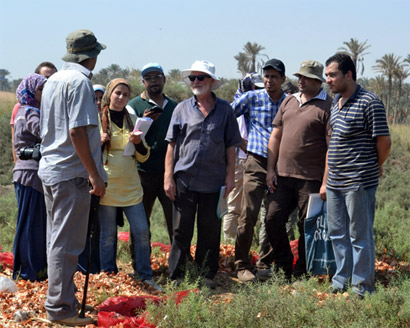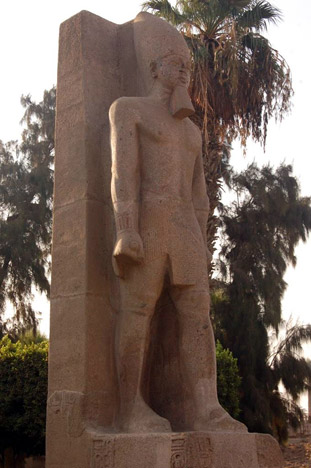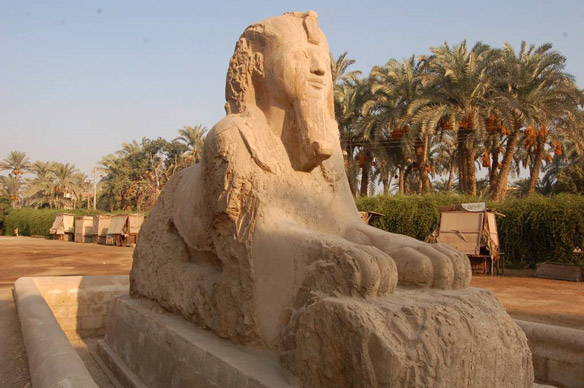By Dr. David Jeffreys (director Survey of Memphis, Egypt Exploration Society)
Everything is coming along very nicely with this advanced Mit Rahina field school, with an enthusiastic and highly committed group of students and their typically professional, critical but supportive tutors. Everyone seems content with their specialist subject areas (ceramics and illustration), and each gave a short and lucid presentation to the others just before the weekend. The tutors are also following their specialisms such as the sizeable collection of seals and seal impressions from the Kom Fakhry site.

My job, as last time three years ago, is to introduce the students to the site of Memphis and the challenges it faces. I will be giving short illustrated talks on the background to the history, and the history of exploration, of Memphis, and we have started a series of site tours, beginning with the Mit Rahina museum with its showpiece, the colossal limestone statue of Ramesses II (Abu’l Hol) and the various objects inside and in the museum garden, including the two standing restored / rebuilt colossi in granite, partners to the limestone one.

We discussed the nature of and reasons for patterns of erosion on the limestone statue and the nearby travertine sphinx, where one side is deeply damaged but the other is a pristine state (apart from the loss of paint) – a result of permanent submersion in ground and flood water (the well preserved side) in contrast to the half that has been subject to alternate wet and dry conditions and has therefore suffered.


We have just visited the mounds of Kom Qala to the east of the workroom, where the palace and temple of Merneptah, successor to Ramesses II, are located, although now virtually unrecognizable due to dense thickets of scrub trees and weeds. Everyone (I think) agreed that the area (which has in the past been part of a modern military camp) presented a formidable site management problem. More talks and tours are planned – discussions on issues of archaeology, heritage and the different publics that need to be considered and served; and visits to western parts of the site, including of course Kom Fakhry itself.
